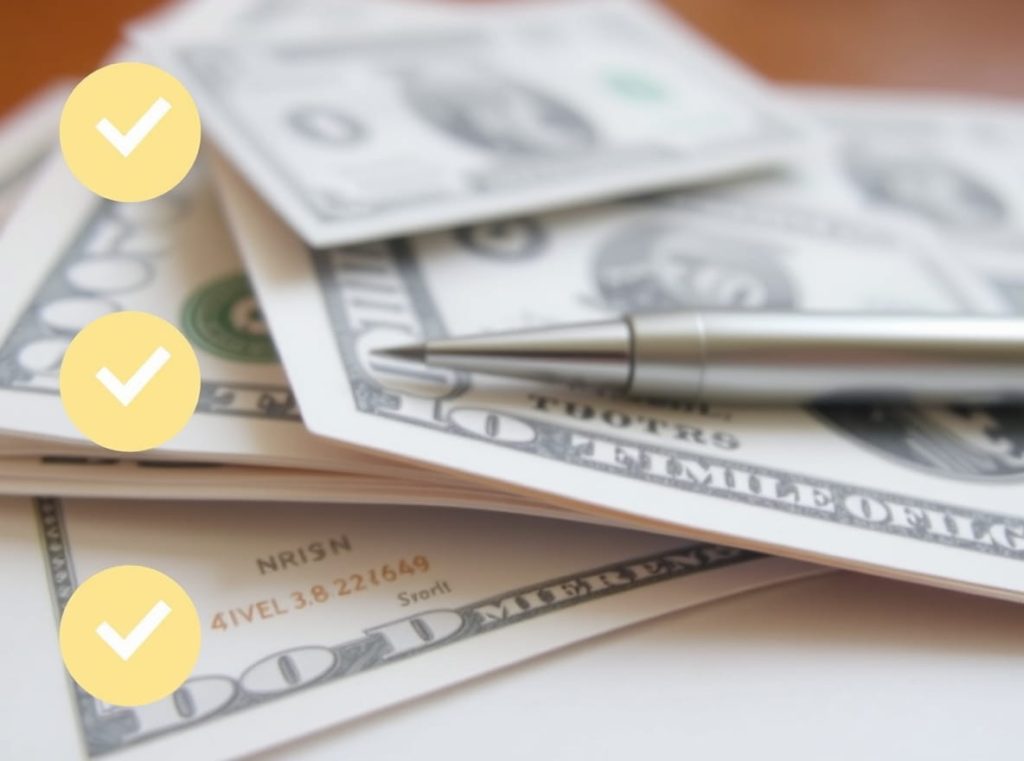
Money can be a complicated subject. We’re told to “save for the future” and “spend less,” but rarely do we get the kind of practical, friendly guidance that makes financial habits feel both empowering and achievable. Imagine if money wasn’t a source of stress, but a tool for creating the life you want. Let’s dive into some money habits that can turn financial health from a lofty ideal into an accessible reality, even if you’re just getting started. So, are you on track?
1. Create a Realistic Budget – and Stick to It
A budget might sound restricting, but it’s really about creating freedom. It’s the roadmap that shows where your money is going and helps ensure it’s working for you, not the other way around. The key to a successful budget? Make it realistic. If you love a daily coffee, don’t cut it out—just account for it.
Example: Maria is a student with a part-time job. Each month, she sets aside a small amount for essentials, some for her “fun fund,” and a bit for savings. It’s not much, but it’s manageable, and she feels in control of her spending. Every dollar has a place, and every choice she makes feels intentional.
Action Step: Write down your monthly income, then assign every dollar a job. Let your budget be a mirror, showing you what you value.
2. Automate Your Savings
Here’s a secret: humans are notoriously bad at remembering to save. So let technology do the work! By automating your savings, you’re removing the friction that often stops people from building wealth. Whether it’s $10 a week or $100 a month, consistency is what matters.
Example: Josh, a 21-year-old college student, automatically transfers $25 to his savings each payday. Over the months, he’s amazed at how it’s built up. It feels like “free money,” but he knows it’s just the magic of automation.
Action Step: Set up a recurring transfer from your checking account to a savings account. Start small if you need to, but commit to consistency.
3. Limit Your “Wants” and Prioritize Your Needs
It’s easy to justify a new gadget or outfit, but healthy financial habits often come down to learning the difference between what we want and what we need. You don’t have to cut out all fun spending, but consider making these decisions with purpose.
Example: Emma wants to go on a spring break trip with friends but realizes she doesn’t have enough saved. She decides to pick up an extra shift at work rather than dipping into her emergency fund, which she’s reserved for actual emergencies.
Action Step: Next time you’re tempted by a purchase, ask yourself: Will this add to my long-term happiness, or is it just an impulse?
4. Build an Emergency Fund
Life happens, and unexpected expenses can throw us off track. Having an emergency fund is like wearing a seatbelt—it’s there when you need it, providing peace of mind and helping you avoid debt.
Example: Tom’s car broke down, but he had an emergency fund he’d been building slowly for months. He was able to pay for the repair without stressing about next month’s rent.
Action Step: Start an emergency fund and aim to save at least $500 initially. Add to it whenever you can until you reach three to six months of living expenses.
5. Check in Monthly on Your Goals
Financial habits aren’t set-it-and-forget-it—they’re more like plants that need water and sunlight to grow. Once a month, check in with yourself: Are you on track? Did you overspend? Is there a new goal you want to save for? Think of this as a monthly conversation with your future self.
Example: Sarah sits down on the first Saturday of each month and reviews her spending. She sees where she’s doing well and where she’s fallen short, adjusting her habits as needed. This monthly habit keeps her in tune with her finances.
Action Step: Set a recurring date each month to review your financial progress. Consider it a money date—an hour dedicated to building your future.
6. Invest Early (Even if It’s Just a Little)
Investing isn’t just for the wealthy or for “later.” In fact, the earlier you start, the more powerful the effect of compound interest becomes. Even if you’re just investing $10 a month, time is on your side.
Example: Mark is a 20-year-old student who invests a small amount in an index fund each month. Over time, he’s watched it grow, feeling the satisfaction of building something for his future.
Action Step: Open a small investment account. Look into low-fee index funds, and put in whatever you can. It’s about the habit, not the amount.
7. Surround Yourself with Financially Minded People
Ever noticed how habits rub off on us? When we surround ourselves with people who value financial health, we’re more likely to adopt similar habits. You don’t need to announce your money goals, but find friends who appreciate budgeting, saving, and planning.
Example: When Jenny joined a finance club at school, she found herself more inspired to save, budget, and invest than ever before. She learned tips from her friends, making money conversations feel less intimidating.
Action Step: Join a group, follow finance influencers, or talk openly with friends who are also trying to improve their money habits. You’ll find strength in numbers.
Final Thought: Are You on Track?
Your financial journey doesn’t have to look like anyone else’s. The goal here isn’t perfection—it’s progress. Small, consistent money habits can make a massive difference over time. Each action is a vote for the kind of future you want. So start where you are. Build a foundation. And, most importantly, keep going.

